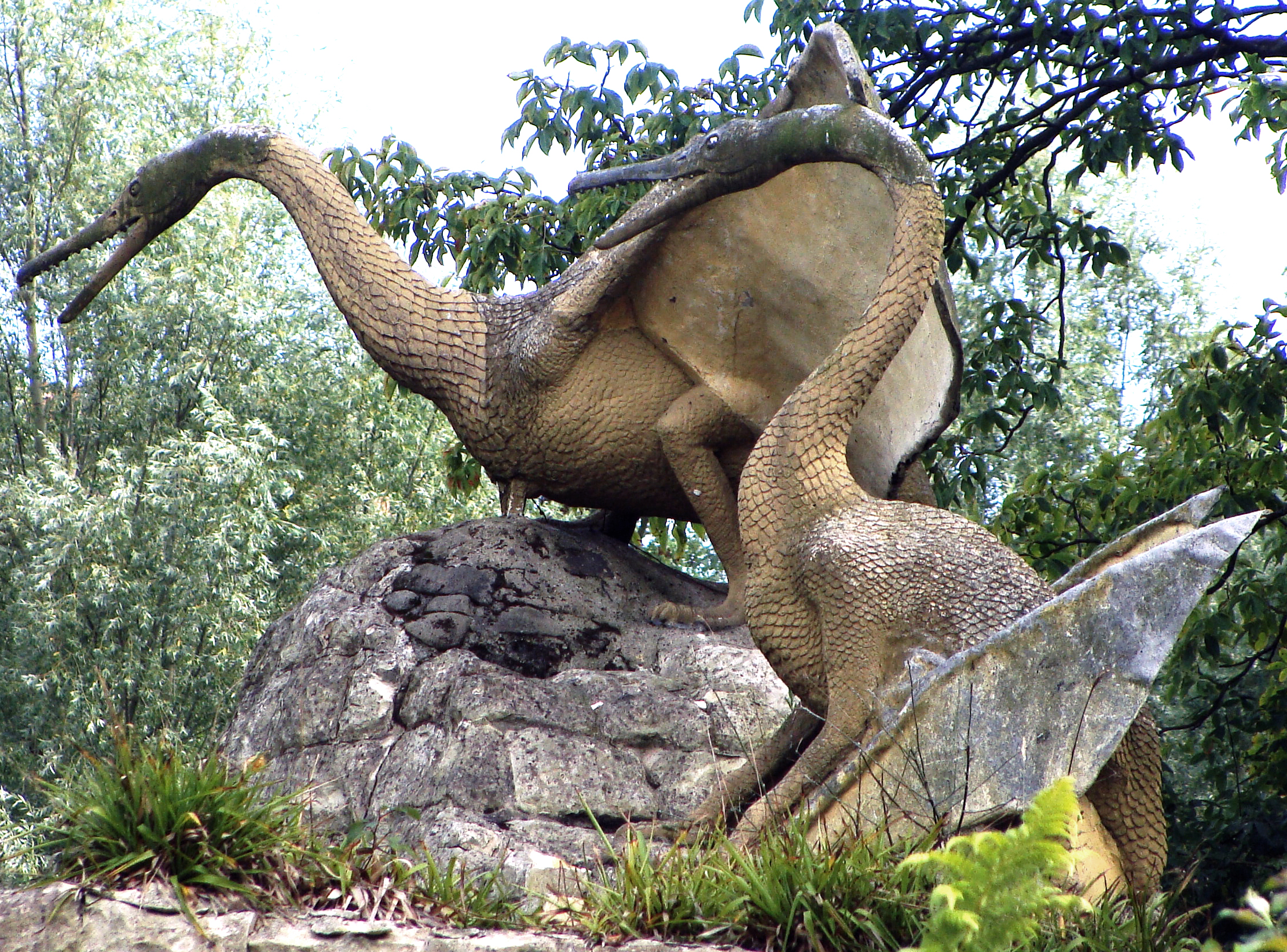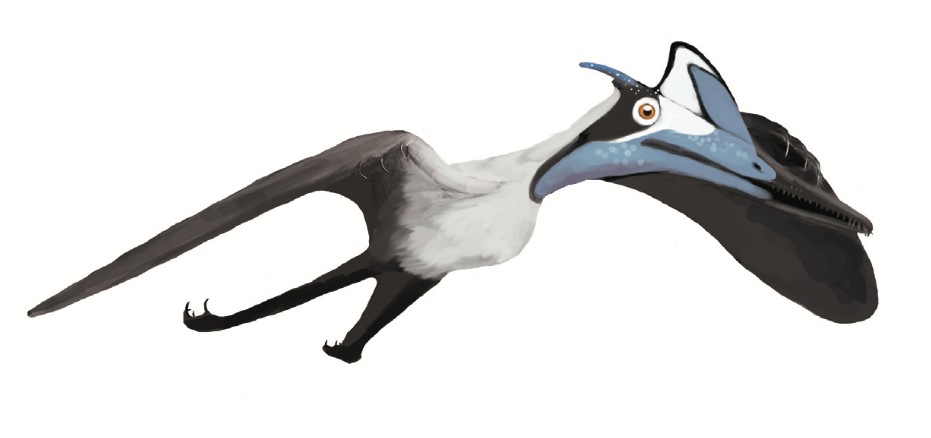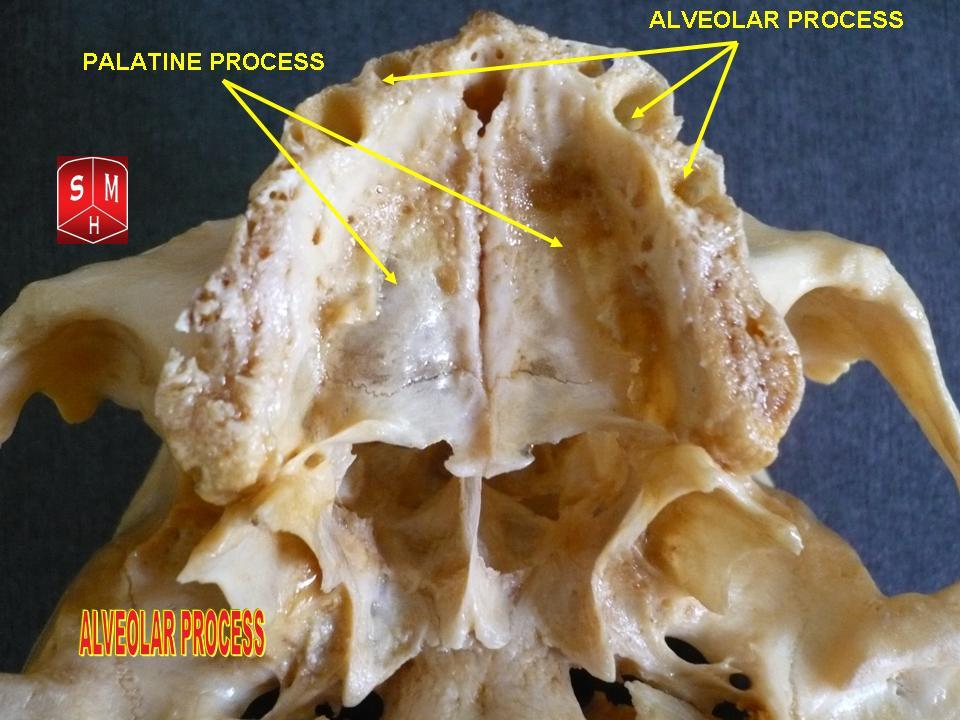|
Anhanguera Cuvieri
''Cimoliopterus'' is a genus of pterosaur that lived during the Late Cretaceous in what is now England and the United States. The first known specimen, consisting of the front part of a snout including part of a crest, was discovered in the Grey Chalk Subgroup of Kent, England, and described as the new species ''Pterodactylus cuvieri'' in 1851. The Specific name (zoology), specific name ''cuvieri'' honoured the palaeontologist George Cuvier, and the genus ''Pterodactylus'' was then used for many pterosaurs of species that are no longer thought to be closely related. It was among the first pterosaurs to be depicted as sculptures, in Crystal Palace Park in the 1850s. The species was subsequently assigned to various other genera, including ''Ornithocheirus'' and ''Anhanguera (pterosaur), Anhanguera''. In 2013, the species was moved to a new genus, as ''Cimoliopterus cuvieri''; the generic name ''Cimoliopterus'' is derived from the Greek words for "chalk" and "wing". Other specimens ... [...More Info...] [...Related Items...] OR: [Wikipedia] [Google] [Baidu] |
Cenomanian
The Cenomanian is, in the International Commission on Stratigraphy's (ICS) geological timescale, the oldest or earliest age (geology), age of the Late Cretaceous epoch (geology), Epoch or the lowest stage (stratigraphy), stage of the Upper Cretaceous series (stratigraphy), Series. An age is a unit of geochronology; it is a unit of time; the stage is a unit in the stratigraphic column deposited during the corresponding age. Both age and stage bear the same name. As a unit of geologic time measure, the Cenomanian Age spans the time between 100.5 and 93.9 million years ago (Mya). In the geologic timescale, it is preceded by the Albian and is followed by the Turonian. The Upper Cenomanian starts around at 95 Mya. The Cenomanian is coeval with the Woodbinian of the regional timescale of the Gulf of Mexico and the early part of the Eaglefordian of the regional timescale of the East Coast of the United States. At the end of the Cenomanian, an anoxic event took place, called the Cenomani ... [...More Info...] [...Related Items...] OR: [Wikipedia] [Google] [Baidu] |
Kent
Kent is a Ceremonial counties of England, ceremonial county in South East England. It is bordered by Essex across the Thames Estuary to the north, the Strait of Dover to the south-east, East Sussex to the south-west, Surrey to the west, and Greater London to the north-west. The county town is Maidstone. The county has an area of and had population of 1,875,893 in 2022, making it the Ceremonial counties of England#Lieutenancy areas since 1997, fifth most populous county in England. The north of the county contains a conurbation which includes the towns of Chatham, Kent, Chatham, Gillingham, Kent, Gillingham, and Rochester, Kent, Rochester. Other large towns are Maidstone and Ashford, Kent, Ashford, and the City of Canterbury, borough of Canterbury holds City status in the United Kingdom, city status. For local government purposes Kent consists of a non-metropolitan county, with twelve districts, and the unitary authority area of Medway. The county historically included south-ea ... [...More Info...] [...Related Items...] OR: [Wikipedia] [Google] [Baidu] |
Targaryendraconia
Targaryendraconia is an extinct clade of lanceodontian pterosaurs that lived from the Early to Late Cretaceous period in Europe, North America, South America, and Australia. Classification Below is a cladogram following a topology by Pêgas and colleagues in 2019. In their analysis, they recovered Targaryendraconia as the sister taxon of the clade Anhangueria, both of which are within the more inclusive group Ornithocheirae. Targaryendraconia is split into two families: the Targaryendraconidae, which contains '' Aussiedraco'', '' Barbosania'', and '' Targaryendraco'', and the Cimoliopteridae, which contains '' Aetodactylus'', '' Camposipterus'', and '' Cimoliopterus''.Rodrigo V. Pêgas, Borja Holgado & Maria Eduarda C. Leal (2019) On ''Targaryendraco wiedenrothi'' gen. nov. (Pterodactyloidea, Pteranodontoidea, Lanceodontia) and recognition of a new cosmopolitan lineage of Cretaceous toothed pterodactyloids, Historical Biology, Contrastingly, a study by Alexander Averianov ... [...More Info...] [...Related Items...] OR: [Wikipedia] [Google] [Baidu] |
Cimoliopteridae
Targaryendraconia is an extinct clade of lanceodontian pterosaurs that lived from the Early to Late Cretaceous period in Europe, North America, South America, and Australia. Classification Below is a cladogram following a topology by Pêgas and colleagues in 2019. In their analysis, they recovered Targaryendraconia as the sister taxon of the clade Anhangueria, both of which are within the more inclusive group Ornithocheirae. Targaryendraconia is split into two families: the Targaryendraconidae, which contains ''Aussiedraco'', '' Barbosania'', and ''Targaryendraco'', and the Cimoliopteridae, which contains ''Aetodactylus'', ''Camposipterus'', and ''Cimoliopterus''.Rodrigo V. Pêgas, Borja Holgado & Maria Eduarda C. Leal (2019) On ''Targaryendraco wiedenrothi'' gen. nov. (Pterodactyloidea, Pteranodontoidea, Lanceodontia) and recognition of a new cosmopolitan lineage of Cretaceous toothed pterodactyloids, Historical Biology, Contrastingly, a study by Alexander Averianov in 2025 ... [...More Info...] [...Related Items...] OR: [Wikipedia] [Google] [Baidu] |
Ornithocheiran
Ornithocheiromorpha (from Ancient Greek, meaning "bird hand form") is a group of pterosaurs within the suborder Pterodactyloidea. Fossil remains of this group date back from the Early to Late Cretaceous periods (Valanginian to Turonian stages), around 140 to 92.5 million years ago. Ornithocheiromorphs have been discovered worldwide except Antarctica, though most genera have been recovered in Europe, Asia and South America. They were the most diverse and successful pterosaurs during the Early Cretaceous, but throughout the Late Cretaceous they were replaced by pteranodontians and azhdarchoids. The Ornithocheiromorpha was defined in 2014 by Andres and colleagues, and they made Ornithocheiromorpha the most inclusive clade containing ''Ornithocheirus'', but not ''Pteranodon''. Ornithocheiromorphs are considered to be some of the largest animals to have ever flown. Members of this group are also regarded to have some of the largest pterosaur wingspans, such as the one estimated for t ... [...More Info...] [...Related Items...] OR: [Wikipedia] [Google] [Baidu] |
Wing-membranes
The patagium (: patagia) is a membranous body part that assists an animal in obtaining lift when gliding or flying. The structure is found in extant and extinct groups of flying and gliding animals including bats, theropod dinosaurs (including birds and some dromaeosaurs), pterosaurs, gliding mammals, some flying lizards, and flying frogs. The patagium that stretches between an animal's hind limbs is called the uropatagium (especially in bats) or the interfemoral membrane. Bats In bats, the skin forming the surface of the wing is an extension of the skin of the abdomen that runs to the tip of each digit, uniting the forelimb with the body. The patagium of a bat has four distinct parts: #Propatagium: the patagium present from the neck to the first digit. #Dactylopatagium: the portion found within the digits. #Plagiopatagium: the portion found between the last digit and the hindlimbs. #Uropatagium: the posterior portion of the flap between the two hindlimbs. Pterosaurs In the fly ... [...More Info...] [...Related Items...] OR: [Wikipedia] [Google] [Baidu] |
Pycnofibres
Pterosaurs are an extinct clade of flying reptiles in the Order (biology), order Pterosauria. They existed during most of the Mesozoic: from the Late Triassic to the end of the Cretaceous (228 million to 66 million years ago). Pterosaurs are the earliest vertebrates known to have evolved flying and gliding animals, powered flight. Their wings were formed by a membrane of skin, muscle, and other tissue (biology), tissues stretching from the ankles to a dramatically lengthened fourth finger. There were two major types of pterosaurs. Basal pterosaurs (also called 'non-pterodactyloid pterosaurs' or 'rhamphorhynchoids') were smaller animals with fully toothed jaws and, typically, long tails. Their wide wing membranes probably included and connected the hind legs. On the ground, they would have had an awkward sprawling posture, but the anatomy of their joints and strong claws would have made them effective climbers, and some may have even lived in trees. Basal pterosaurs were ... [...More Info...] [...Related Items...] OR: [Wikipedia] [Google] [Baidu] |
Tooth Sockets
Dental alveoli (singular ''alveolus'') are sockets in the jaws in which the roots of teeth are held in the alveolar process with the periodontal ligament. The lay term for dental alveoli is tooth sockets. A joint that connects the roots of the teeth and the alveolus is called a ''gomphosis'' (plural ''gomphoses''). Alveolar bone is the bone that surrounds the roots of the teeth forming bone sockets. In mammals, tooth sockets are found in the maxilla, the premaxilla, and the mandible. Etymology 1706, "a hollow", especially "the socket of a tooth", from Latin alveolus "a tray, trough, basin; bed of a small river; small hollow or cavity", diminutive of alvus "belly, stomach, paunch, bowels; hold of a ship", from PIE root *aulo- "hole, cavity" (source also of Greek aulos "flute, tube, pipe"; Serbo-Croatian, Polish, Russian ulica "street", originally "narrow opening"; Old Church Slavonic uliji, Lithuanian aulys "beehive" (hollow trunk), Armenian yli "pregnant"). The word was extended ... [...More Info...] [...Related Items...] OR: [Wikipedia] [Google] [Baidu] |
Premaxilla
The premaxilla (or praemaxilla) is one of a pair of small cranial bones at the very tip of the upper jaw of many animals, usually, but not always, bearing teeth. In humans, they are fused with the maxilla. The "premaxilla" of therian mammals has been usually termed as the incisive bone. Other terms used for this structure include premaxillary bone or ''os premaxillare'', intermaxillary bone or ''os intermaxillare'', and Goethe's bone. Human anatomy In human anatomy, the premaxilla is referred to as the incisive bone (') and is the part of the maxilla which bears the incisor teeth, and encompasses the anterior nasal spine and alar region. In the nasal cavity, the premaxillary element projects higher than the maxillary element behind. The palatal portion of the premaxilla is a bony plate with a generally transverse orientation. The incisive foramen is bound anteriorly and laterally by the premaxilla and posteriorly by the palatine process of the maxilla. It is formed from ... [...More Info...] [...Related Items...] OR: [Wikipedia] [Google] [Baidu] |
Texas
Texas ( , ; or ) is the most populous U.S. state, state in the South Central United States, South Central region of the United States. It borders Louisiana to the east, Arkansas to the northeast, Oklahoma to the north, New Mexico to the west, and has Mexico-United States border, an international border with the Mexican states of Chihuahua (state), Chihuahua, Coahuila, Nuevo León, and Tamaulipas to the south and southwest. Texas has Texas Gulf Coast, a coastline on the Gulf of Mexico to the southeast. Covering and with over 31 million residents as of 2024, it is the second-largest state List of U.S. states and territories by area, by area and List of U.S. states and territories by population, population. Texas is nicknamed the ''Lone Star State'' for its former status as the independent Republic of Texas. Spain was the first European country to Spanish Texas, claim and control Texas. Following French colonization of Texas, a short-lived colony controlled by France, Mexico ... [...More Info...] [...Related Items...] OR: [Wikipedia] [Google] [Baidu] |
Britton Formation
The Britton Formation is a geologic formation deposited during the Middle Cenomanian to the Early Turonian ages of the Late Cretaceous in modern-day East Texas. It forms the lower half of the Eagle Ford Group in the northern portion of East Texas. The formation was named by W. L. Moreman in 1932 for outcrops on Mountain Creek near the small town of Britton, south of Dallas. In the Dallas area it has been subdivided into the Six Flags Limestone, Turner Park Member, and Camp Wisdom Member.Reaser, D. F. (2002) Geology of the Dallas-Ft. Worth Metroplex and local geologic/meteorologic hazards: Upper Saddle River, New Jersey, Pearson Custom Publishing, 193 p. The Six Flags Limestone is a 3 ft (1 m) thick fossiliferous calcarenite made up of pieces (prisms) of ''Inoceramus'' clams. The Turner Park and Camp Wisdom Members were subdivided based on the numerous volcanic ash beds (bentonites) found in the Turner Park, and the common occurrence of concretions in the Camp Wisdom. The ... [...More Info...] [...Related Items...] OR: [Wikipedia] [Google] [Baidu] |
Junior Synonym
In taxonomy, the scientific classification of living organisms, a synonym is an alternative scientific name for the accepted scientific name of a taxon. The botanical and zoological codes of nomenclature treat the concept of synonymy differently. * In botanical nomenclature, a synonym is a scientific name that applies to a taxon that now goes by a different scientific name. For example, Linnaeus was the first to give a scientific name (under the currently used system of scientific nomenclature) to the Norway spruce, which he called '' Pinus abies''. This name is no longer in use, so it is now a synonym of the current scientific name, '' Picea abies''. * In zoology, moving a species from one genus to another results in a different binomen, but the name is considered an alternative combination rather than a synonym. The concept of synonymy in zoology is reserved for two names at the same rank that refers to a taxon at that rank – for example, the name ''Papilio prorsa'' Linnaeus, ... [...More Info...] [...Related Items...] OR: [Wikipedia] [Google] [Baidu] |






